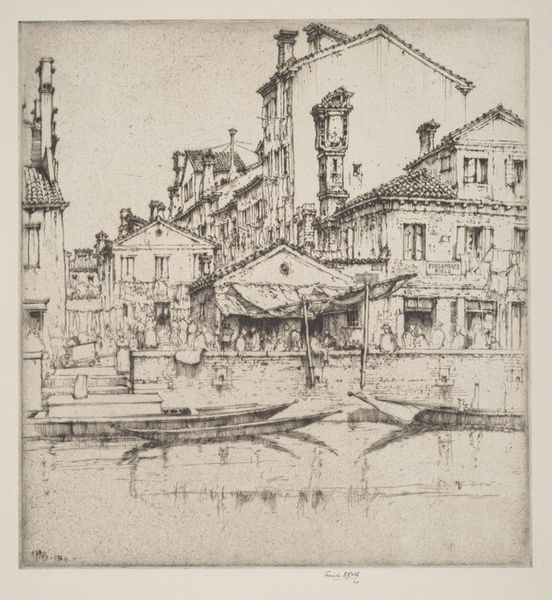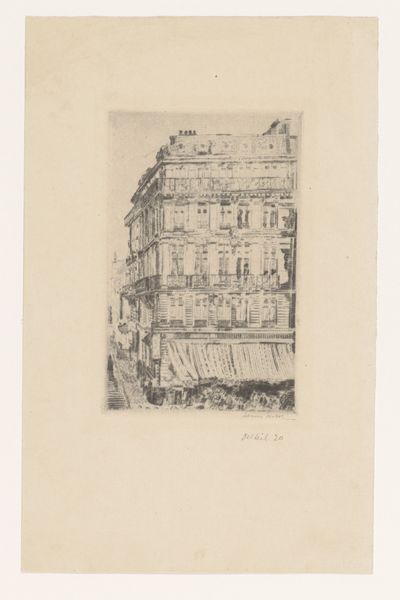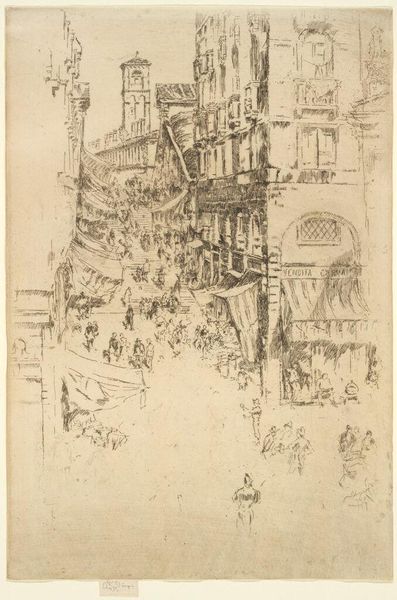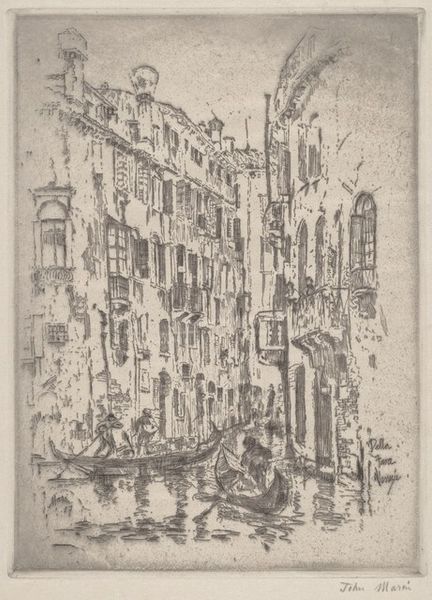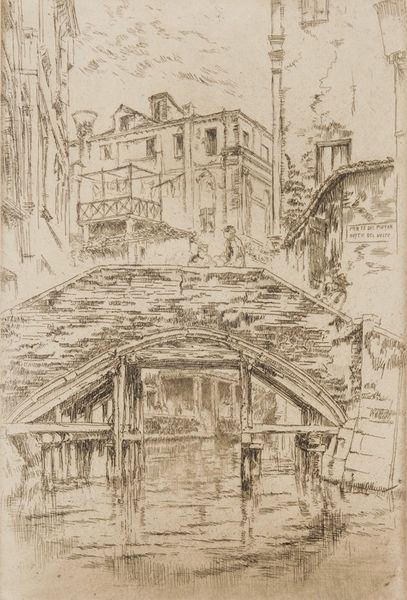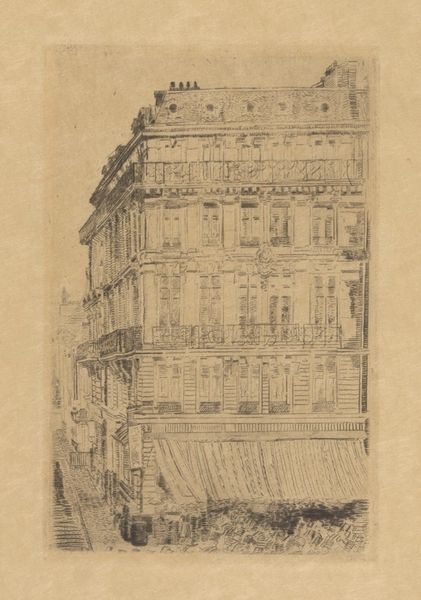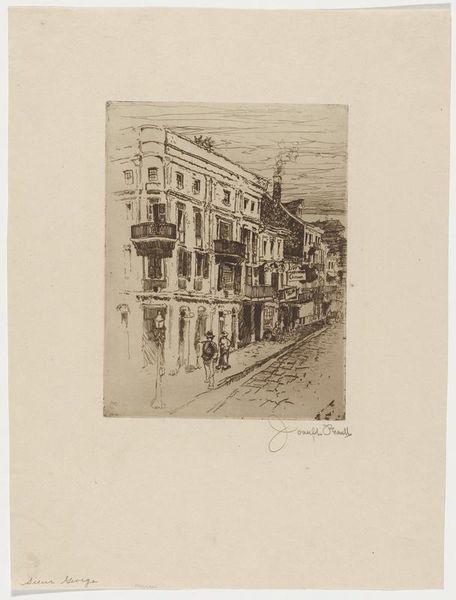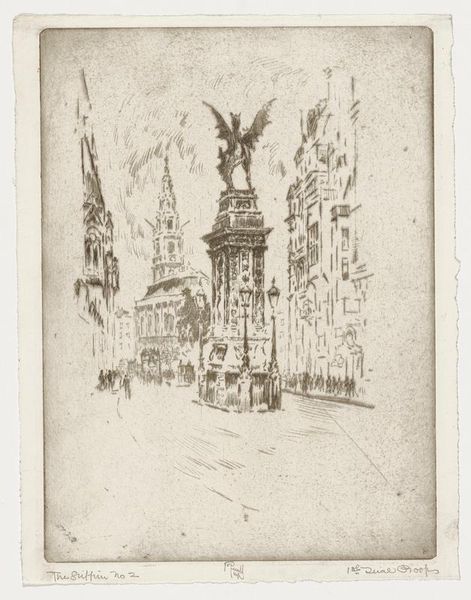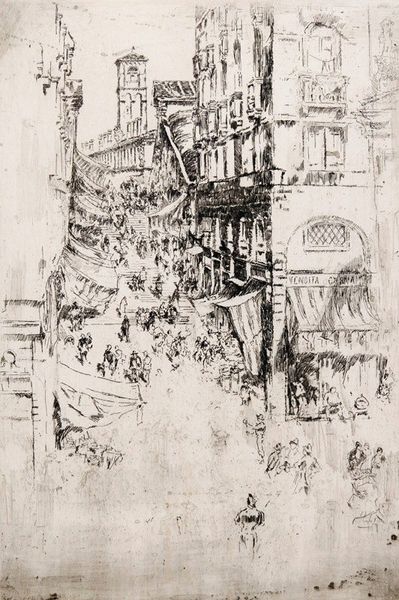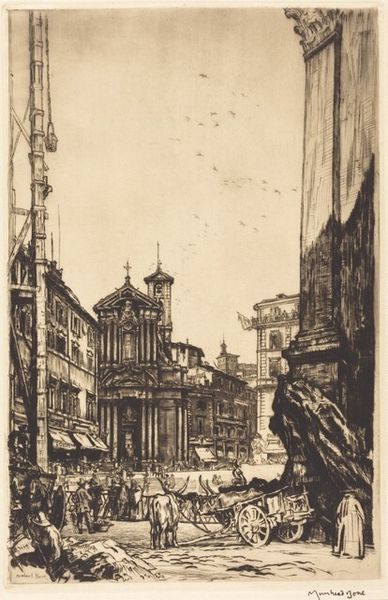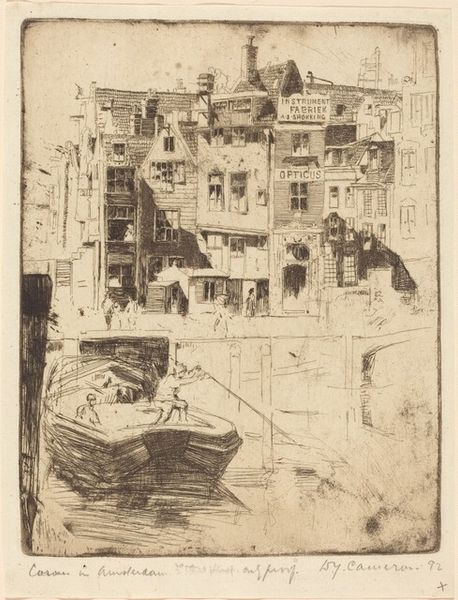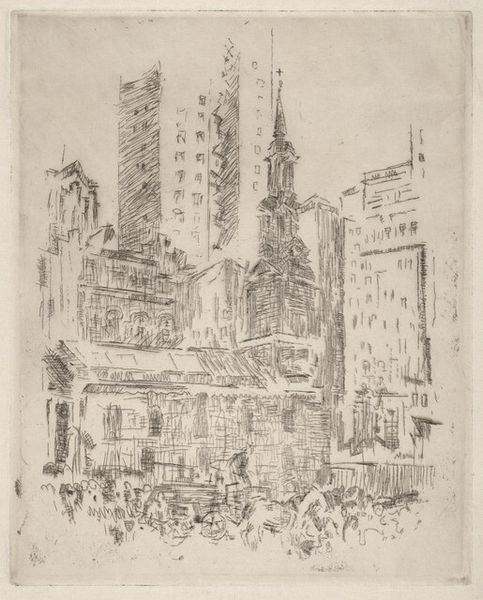
print, etching
# print
#
etching
#
cityscape
#
italian-renaissance
#
realism
Copyright: National Gallery of Art: CC0 1.0
Curator: This is Louis Conrad Rosenberg's etching, "Campo di Fiore, Rome," created in 1922. Editor: My immediate impression is a kind of ordered chaos. The architectural backdrop and the imposing statue give way to the vibrant, messy life of the marketplace below. The stark etching seems appropriate for capturing a scene dominated by greys. Curator: Exactly. Note the meticulous rendering of architectural detail contrasting with the fluid lines describing the market stalls. The hatching and cross-hatching build up a compelling textural density. I want to draw attention to the tonal variations he achieves—from deep blacks in the shadows under the awnings to the almost paper-white sky. This establishes the form and the implied source of light within the etching itself. Editor: And consider the statue looming over the marketplace. It visually anchors the whole scene. This juxtaposition could hint at the enduring presence of intellectual and political figures – Giordano Bruno, perhaps? - overseeing the daily, bustling lives of ordinary people. It feels laden with meaning, especially knowing Campo de’ Fiori was historically a site of public executions. The layering of historical memory seems palpable. Curator: A compelling symbolic reading. I’m interested, too, in the way Rosenberg manipulates space. There's a flattening effect, almost as if the background buildings are compressed. The receding planes are not easily read but create a deliberate formal tension. Notice how he creates a series of planes that create a dynamic surface in the overall composition. Editor: Perhaps this sense of compression reinforces that sense of history bearing down on the present. The figures in the marketplace become these anonymous ciphers caught within the weight of tradition and circumstance. Curator: That reading is astute. Focusing again on formal properties: see how the horizontal lines of the stalls and the vertical lines of the buildings create a rigid grid and a sense of stability and confinement? Editor: Yes, there's a wonderful dialectic there. It brings to mind Walter Benjamin's observations about modernity and its ruins – the fragments of history continually reshaping the present. Curator: Precisely. Examining the work's internal structure provides a potent reflection on the historical landscape within a city. Editor: A powerful image; both immediate in its depiction of daily life, but also hinting at so much more.
Comments
No comments
Be the first to comment and join the conversation on the ultimate creative platform.
